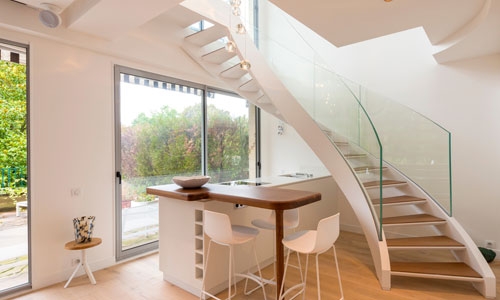光固化胶粘剂为何在结构装配中表现出色
实现与各种基材的可靠粘合一直是制造商面临的挑战。UV/可见光固化技术的出现彻底改变了零件的组装方式,用粘合剂和其他光固化材料(如涂料、灌封胶和垫片密封剂)取代了铆钉、螺钉、螺母、法兰和螺栓等机械紧固方法。光固化胶粘剂(LCA) 具有快速固化、精确控制和放置、出色的粘合强度以及轻松将玻璃、塑料、金属和不同基板连接在一起的能力。
塑料粘接
塑料是数百万种产品的基石,其化学成分使得粘接塑料变得十分困难。有时,基材的表面能较低,例如高密度和低密度聚乙烯 (HDPE 和 LDPE),因此组装或涂层塑料可能非常困难,甚至不可能。此外,通过防UV塑料进行固化或粘接不同基板可能非常棘手。然而,由于 LCA 利用光能进行固化,因此它们非常适合组装半透明和透明的塑料部件以及不同的材料。
uv固化塑料粘接粘附塑料材料,包括聚碳酸酯(PC)以及聚对苯二甲酸乙二醇酯 (PET) 到各种丙烯酸树脂 ( 聚甲基丙烯酸甲酯)。这些粘合剂系统能够制造出耐用且外观美观的组件,同时保持塑料所需的光学性能。
设计工程师在寻找用于塑料用胶粘剂粘接的粘合剂时考虑的一些关键性能特性包括耐高温、耐化学性、耐湿性和长期耐用性。
需要考虑的其他特征包括:
- 抗冲击性
- 能够粘合具有不同表面能的不同塑料
- 对柔性和刚性基材具有优异的附着力
- 低挥发性有机化合物和绿色配方
- 粘合线清晰、无气泡
- RoHS 和 REACH 合规性
Dymax 低收缩、低应力UV胶粘剂适用于塑料基材,可与半透明和透明材料形成可靠、高强度粘合,包括液晶聚合物(液晶聚合物), 丙烯腈丁二烯苯乙烯(ABS),以及聚氨酯(PU)。LCA 有助于确保塑料的光学透明度、结构完整性以及基材的透光和扩散特性,同时实现成品部件的无缝组装。因此,设计工程师可以在它们之间实现可靠且美观的粘合。
这些塑料基材中有许多用于包装和容器、标牌和高端显示器、灯具、汽车前照灯和子组件以及消费可穿戴设备。典型应用包括密封关键汽车部件、珠宝制造、外壳组装和航空航天减震。OEM 在整个汽车、电子、家电、白色家电和消费品行业中都使用它们。
Dymax 提供粘合剂解决方案的其他常见工业塑料材料包括 (PE) 聚乙烯,(宾夕法尼亚州) 聚酰胺, (电源供应器) 聚砜和(PVC) 聚氯乙烯。
此外,还有专门为医用级塑料配制的 LCA,包括聚乙烯亚胺(聚醚嵌段酰胺)和难以粘合的 COC 和 COP (环状烯烃共聚物) TPU (热塑性聚氨酯)。用于一次性医疗器械和一些医疗可穿戴应用的 Dymax 粘合剂具有多种特性,包括能够耐受伽马射线、环氧乙烷和等离子等灭菌方法,符合 ISO 10993 生物相容性标准,以及一些不含IBOA 。
玻璃粘接胶粘剂
无论是进行玻璃与玻璃粘接,还是将玻璃与陶瓷、铅晶体、钢或镀层金属、软玻璃或硼硅酸盐玻璃,甚至热固性塑料基材连接,设计工程师都在寻求玻璃粘接LCA具有优异的附着力强度和光学清晰度。
其他理想特性包括:
- 耐热循环
- 紫外线稳定性可承受长时间暴露在阳光下
- 高玻璃化转变温度(T克)
- 低收缩
Dymax玻璃粘接胶粘剂包括低应力、不黄变、抗振动和抗热冲击的配方。它们在高冲击应用中的大面积粘接方面表现出色,具有防潮和耐高温的特点,同时在需要时保持其强度和柔韧性。这些产品使用紫外线/可见光广谱或 LED 灯可在几秒钟内固化,有些产品具有二次加热或活化剂固化功能,可用于防紫外线或有色玻璃。
用于玻璃粘接和层压应用的UV胶粘剂可用于组装家具、高脚杯、小雕像、奖杯、防弹玻璃、艺术品、新奇物品以及喷泉、窗户和玻璃装置等建筑物品。LCA 也适用于玻璃与金属支架组装。
Dymax 可用于玻璃粘接应用的产品包括 429 , 431 , 和 4-20418-GEL 。
金属粘接
UV/可见光固化胶粘剂在粘接金属基材包括铝、不锈钢和铜。它们能形成牢固耐用的粘合,可承受温度变化、振动和恶劣的环境条件。
为了进一步增强粘接过程,表面底漆,如活化剂,可与UV/可见光固化胶粘剂一起使用。当应用于不透明表面时,它们有助于准备粘接基材,提高粘合力,并促进更好的粘合剂润湿。它们对于优化粘合剂和基材之间的相互作用、增强粘合强度至关重要。
设计工程师经常在金属粘接粘合剂中寻找这些重要特性。
- 高剪切强度
- 适合恶劣环境
- 抗振动和冲击
- 热稳定性
- 对不同金属表面具有优异的附着力
Dymax金属用胶粘剂是多固化产品,这意味着它们可以用光固化,但也可以使用热或活化剂来实现完全粘合。它们不添加溶剂,耐腐蚀的且不不易燃的,几秒钟内即可固化,并且某些配方可以连接不同基板。其他可粘合的金属包括铝、铜镍电镀、黄铜、化学镀镍、铬、铁和锌。
金属粘接非常适合线圈绕组、直流电电机组装、磁铁粘接、浅灌封、扬声器硬件组装和汽车闩锁等应用。Dymax LCA 广泛应用于工业、白色家电、航空航天和国防、汽车和电子应用,适用产品包括 6-621 (T、VT、GEL、GEL-F) 6-630 (T) 846-凝胶/ 501-E (激活剂)。
不同基板
粘接时不同的工业基材就像玻璃、金属和塑料一样,光固化胶粘剂的卓越性能使其成为医疗设备、汽车、航空航天和国防以及电子行业制造商不可或缺的材料。使用 LCA 的主要优势包括:
快速固化:传统胶粘剂需要数小时至数天才能完全固化,而光固化胶粘剂只需数秒即可完全固化,大大缩短了生产时间,提高了生产效率。
多功能性:它们具有出色的粘合性能。无论是粘接聚乙烯、硼硅酸盐玻璃还是不锈钢,LCA 都能提供可靠且持久的粘合。
材料兼容性:光固化胶粘剂的配方可与特定基材完美配合。制造商可以选择与被粘合材料的热膨胀系数、硬度和表面能相匹配的粘合剂。这种兼容性可增强粘合强度并降低脱层或失效的风险。
Dymax玻璃用胶粘剂与金属组装、塑料粘塑料、金属粘塑料、塑料与玻璃粘接以及其他不同基板,涵盖范围广泛。
- 9501-F结构粘接:镀镍金属、铝、ABS、PC 和 PC/ABS 混合物
- 6-621-佛蒙特Multi-Cure® 粘合剂:ABS、EP、酚醛塑料、CER、不锈钢
- 9801低收缩环氧树脂:聚碳酸酯、玻璃、丙烯酸和金属表面
- 215-CTH-LV-UR-SC导管组装用粘合剂:尼龙 12、PEBA 和 PET
- 9-20801热界面材料: PCB、FR4、硅、陶瓷和引线框架
- 1406-M塑料和金属医疗胶粘剂:不锈钢、PP、PE、ABS、PC、PEI、PETG、PMMA、PS 和 PVC
- 9309-SC加固粘合剂:引线框架、 PCB、硅和陶瓷
- OP-81-LS光学胶粘剂环氧树脂:聚碳酸酯、玻璃、丙烯酸和金属表面
- 3401工业粘接:ABS、PC、黄铜、玻璃
LCA 可以粘合的其他材料(在特定应用中)包括大理石、石头和木材。
这病历提供了一个示例,其中 Dymax 粘合剂在用于将不同基板粘合在一起时,为客户提高了制造效率并节省了成本。
关键要点
UV/可见光固化胶粘剂已成为工业应用中粘接各种基材的宝贵材料。LCA 具有快速固化、精确控制和出色的粘合强度等特点,其多功能性可有效玻璃粘接、金属、塑料和不同材料。随着行业不断创新并寻求可靠的装配解决方案,粘合剂将继续处于领先地位,释放先进高效制造工艺的潜力。





